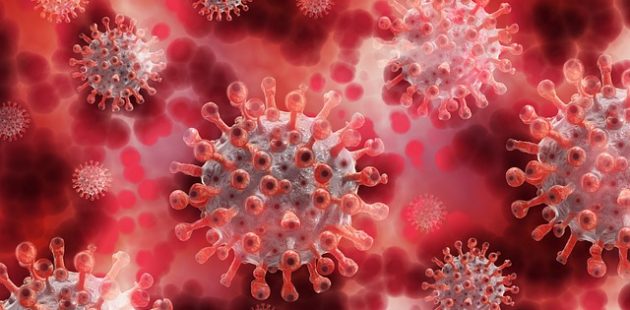WHO presents new Global Air Quality Guidelines
Image by Gerd Altmann from Pixabay
The Director-general of the WHO, Dr. Tedros Adhanom Ghebreyesus, presented new guidelines on Sept. 22 for global air quality[1] and In his opening statement, pointed out that nothing is more essential for life than air.
And yet, because of air pollution, the simple act of breathing contributes to 7 million deaths per year worldwide, while polluted air makes life miserable for a multitude of that number. Almost everyone around the world is exposed to unhealthy levels of air pollution, sometimes only intermittently, but all too often permanently.
Inhaling dirty air is a major cause of non-communicable diseases like pneumonia, asthma, COPD, heart and vascular problems, stroke, and cancers. During the past year, it was discovered that dirty air also increases the risk of severe COVID-19.
Polluted air is a health threat in practically all countries, industrialized as well as developing, due to the use of fossil fuels, not only for industry, but also for domestic use: cooking, heating, and lighting.
The previous WHO guidelines for air quality date from 2005, but since then new evidence has accumulated that shows how much air pollution affects all parts of the human body, from the adult brain and other vital organs to a growing baby in a mother’s womb, at even lower concentrations than previously observed.
According to the WHO, the six most important air pollutants are particulate matter (ultra-fine and fine, depending on size); nitrogen dioxide (NO2); sulfur dioxide (SO2); ozone (O3) and carbon monoxide (CO). Except for ozone, these are all toxic by-products of combustion, so they usually come hand in hand in different concentrations, depending on the quality of the used fuel. Ozone is formed in the atmosphere, under the influence of sunlight and certain chemicals (‘photochemical smog’).
Compared to the old guidelines from 2005, the new ones have stricter recommended safe levels for these six pollutants, except SO2. For NO2 the safe level is even lowered fourfold, from 40 µg/m3 (microgram per cubic meter of air) till 10 µg/m3 (one microgram is the one-millionth part of a gram).
The WHO also sets a very low standard for chronic CO poisoning, at a maximum of 4 mg/m3 during 24 hours (a milligram is the one thousands part of a gram). This is well below the detection limit of many domestic CO alarms, so if one buys such a life-saving device, it is better to make sure that it can detect low concentrations! For shorter periods of exposure to CO, higher safety levels are allowed to prevent acute poisoning: 10 mg/m3 for a maximum of 8 hours; 35 mg/m3 for 1 hour and 100 mg/m3 for 15 minutes.
As has been pointed out in earlier articles in the BPE, acute poisoning by higher concentrations of CO quickly leads to a lack of oxygen in vital organs, like the brain and the heart, eventually causing coma and even death. While chronic poisoning from prolonged inhalation of low concentrations of CO causes all kinds of psychic and neurological problems and diseases (like Alzheimer’s, Parkinson’s, and Ménière).
The connection between air pollution, especially CO, and COVID-19 has been mentioned several times before in the BPE, already as early as March 2020.[2]
It is important to know that air pollution inside homes is usually higher than in the outside air. This is because most homes use fossil fuels (coal, any type of gas, kerosene, etc) or wood for heating and cooking. So it is essential that the air quality inside homes is well protected against pollution by fine dust, CO, NO2, and SO2. And since these toxic pollutants usually come together, a good and sensitive CO alarm is the best and cheapest way to protect the home and family. Alarms for the other pollutants like NO2, SO2, and fine dust do exist, but are more expensive and more difficult to operate.
The new WHO guidelines against air pollution will be used by many countries, so they will have major implications for public health all over the world. And since a major cause for air pollution is the use of fossil fuels, these new guidelines for better health coincide happily with the policies to combat climate change, because both goals strive for a healthy planet with clean air to live in!
•••• •••• ••••• •••• ••••
[1] See https:// www.who.int/publications/i/item/9789240034228
[2] See: https:// baltimorepostexaminer.com/carbon-monoxide-catalyst-for-coronavirus/2020/03/23
https://lapostexaminer.com/carbon-monoxide-the-key-to-understanding-covid-19/2020/05/26

René van Slooten is a leading ‘Poe researcher’, who theorizes that Poe’s final treatise, ‘Eureka’, a response to the philosophical and religious questions of his time, was a forerunner to Einstein’s theory of relativity. He was born in 1944 in The Netherlands. He studied chemical engineering and science history and worked in the food industry in Europe, Africa and Asia.The past years he works in the production of bio-fuels from organic waste materials, especially in developing countries. His interest in Edgar Allan Poe’s ‘Eureka’ started in 1982, when he found an antiquarian edition and read the scientific and philosophical ideas that were unheard of in 1848. He became a member of the international ‘Edgar Allan Poe Studies Association’ and his first article about ‘Eureka’ appeared in 1986 in a major Dutch magazine. Since then he published numerous articles, essays and letters on Poe and ‘Eureka’ in Dutch magazines and newspapers, but also in the international magazines ‘Nature’, ‘NewScientist’ and TIME. He published the first Dutch ‘Eureka’ translation (2003) and presented two papers on ‘Eureka’ at the international Poe conferences in Baltimore (2002) and Philadelphia (2010). His main interest in ‘Eureka’ is its history and acceptance in Europe and its influence on philosophy and science during the late 19th and early 20th centuries.

